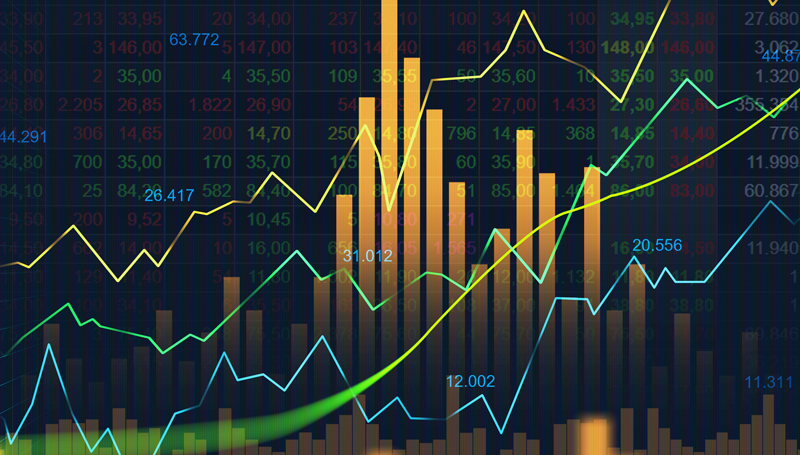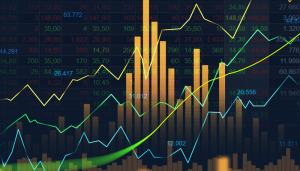

25.01.2022 – What a wild ride: in one of the sharpest reversals ever, Wall Street made the bulls happy. After the days of horror, the rebound was also overdue. Was that it now with the correction? We shed light on the pros and cons.
Violent rebound
What a historic day: yesterday’s Monday was only the sixth time since 1988 that the Nasdaq made up a 4 percent intraday loss to close firmer, according to financial blog ZeroHedge. For the S&P 500, it was the biggest intraday comeback since 2008, when the U.S. was mired in the biggest financial crisis of modern times. Until yesterday’s dramatic reversal, the S&P 500 had never had such a bad start to the year since 1920, down about 11 percent, ZeroHedge recalls. The SPX had slumped about 4 percent during the day, to end the day with a slight gain of half a percentage point. On Wall Street, the index fund SPY – also known as Spider, it follows the S&P 500 – saw shares worth about $100 billion. Only in the Corona Panic of 2020 were there more. The VIX fear indicator also made its biggest reversal since the spring of 2020.
Push from the options market
Analysts at SpotGamma attributed the rarely seen volatility to the options market – massive activity emanated from there after the close in Europe. According to the report, a large put seller suddenly appeared, causing a turnaround in the S&P 500 – all of a sudden, long investors jumped in. Which led to a violent short squeeze. Our 50 cents: we wouldn’t be surprised if a major investment bank took advantage of the shallower market with the departure of the Europeans to launch a major attack. In a matter of hours, the VIX collapsed from 39 to 29.
Bearing factors
What remains is the question of whether this was now a major fundamental reversal or just a flash in the pan. As it stands, the Federal Reserve will go through with the interest rate turnaround. And with the tapering that has now been announced several times, it will suck money out of the financial market. The world’s major central banks – above all the European Central Bank – are likely to follow suit. This is because inflation is threatening people’s savings in both the USA and Europe. Moreover, the danger of a large-scale confrontation in Ukraine with Russia remains. If Moscow makes a show of the West, China could try to attack Taiwan.
Bullish arguments
However, many investors believe that the Fed could trigger a recession by braking too hard. Therefore, new quantitative easing may well be a possibility. Morgan Stanley, for example, recently stated that it won’t be long before weaker growth overtakes Fed tigthening as the biggest concern on the trading floor. Further, Russia might only growl, not attack. Or, in a limited operation, annex the territories where mainly Russian-born Ukrainians live. This would lead to increased appeasement in the West and acceptance of the fact.
So: was that it now? Maybe. ZeroHedge sees the Fed’s Plunge Protection Team behind yesterday’s about-face. It may also have just been the result of a brilliant attack by an investment bank. Which speaks for a short-term effect. We note that the S&P 500 continues to trade below the 200-day line, which was last at 4,430 points. And point out that nothing has actually changed in the fundamental situation. This is indicated by the situation in cryptos: Bitcoin barely moved. The situation is likely to brighten only in the long term, when governments declare the end of the Corona pandemic. Anyway – Bernstein Bank wishes successful trades and investments!
Important Notes on This Publication:
The content of this publication is for general information purposes only. In this context, it is neither an individual investment recommendation or advice nor an offer to purchase or sell securities or other financial products. The content in question and all the information contained therein do not in any way replace individual investor- or investment-oriented advice. No reliable forecast or indication for the future is possible with respect to any presentation or information on the present or past performance of the relevant underlying assets. All information and data presented in this publication are based on reliable sources. However, Bernstein Bank does not guarantee that the information and data contained in this publication is up-to-date, correct and complete. Securities traded on the financial markets are subject to price fluctuations. A contract for difference (CFD) is also a financial instrument with leverage effect. Against this backdrop, CFD trading involves a high risk up to the point of total loss and may not be suitable for all investors. Therefore, make sure that you have fully understood all the correlating risks. If necessary, ask for independent advice. CFDs are complex instruments and are associated with the high risk of losing money quickly because of the leverage effect. 68% of retail investor accounts lose money trading CFD with this provider. You should consider whether you understand how CFD work and whether you can afford to take the high risk of losing your money.
